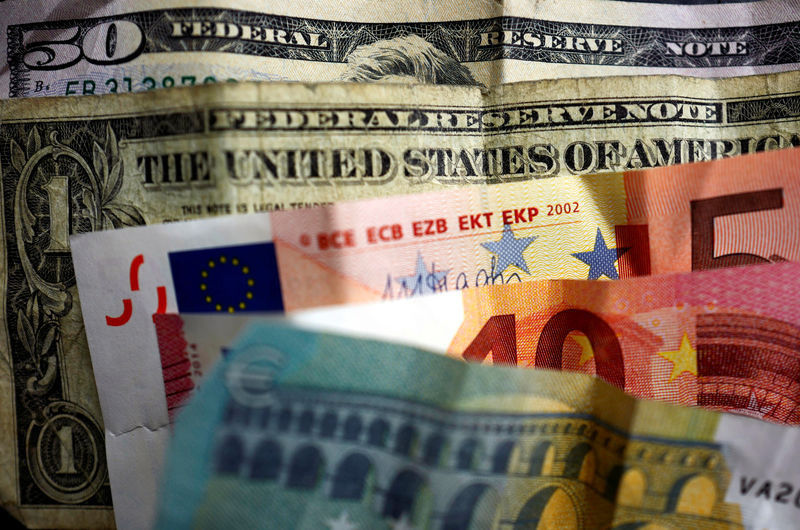Forex
Dollar rises after Powell’s comments; euro slips ahead of eurozone CPI


© Reuters.
Investing.com – The U.S. dollar rose in early European trade Thursday, climbing near to a seven-week high, after the Federal Reserve kept interest rates steady and played down expectations for a March rate cut.
At 04:25 ET (09:25 GMT), the Dollar Index, which tracks the greenback against a basket of six other currencies, traded 0.5% higher at 103.575, close to the highest level since mid-December.
Dollar helped by Powell’s comments
The kept interest rates unchanged at elevated levels at the conclusion of its latest policy-setting meeting on Wednesday.
That was widely expected, but the dollar received a boost after Fed Chair said that recent stickiness in inflation will keep the central bank from carrying out any monetary loosening in the near-term.
Goldman Sachs pushed back its expectation of the Fed starting interest rate cuts to May from March, while maintaining its forecast of five 25 basis points rate cuts this year.
The influential investment bank expects four consecutive cuts starting in May through September and a final cut in December.
“The strong message coming across from the Fed yesterday was that inflation and growth were moving into ‘better balance’, rate cuts would likely be coming but more data was required to give the Fed confidence to start the cycle,” said analysts at ING, in a note.
There’s more labor market data to study later in the session, in the shape of weekly , ahead of Friday’s key monthly report.
Euro slips ahead of eurozone CPI data
In Europe, traded 0.2% lower at 1.0791, ahead of the release of the latest eurozone inflation data, which could provide the policymakers with a push towards cutting interest rates.
The is expected to fall to 2.7% in January on an annual basis, a drop from 2.9% the prior month, and dropping closer to the ECB’s 2% medium-term target.
The European Central Bank has tamed the “greedy beast” of inflation, policymaker Joachim Nagel said earlier this week, in a departure from his usual cautious tone.
“Given the successful disinflation trends and weak activity data, it is therefore more difficult for the European Central Bank than the Fed to push back against early easing expectations,” added ING. “That is why markets still attach a 60% chance to an April rate cut from the ECB.”
traded 0.3% lower at 1.2647 ahead of the Bank of England’s policy meeting later in the session.
The is expected to keep rates unchanged, with Governor having previously stressed it is too early to talk about lower borrowing costs, but the policymakers could offer hints that the central bank is moving towards cutting interest rates this year.
Yen gains as officials discuss monetary tightening
In Asia, fell 0.1% to 146.75, with the yen gaining slightly after minutes from the Bank of Japan’s January meeting showed policymakers actively discussing a move away from its ultra-dovish stance.
edged 0.2% higher to 7.1830, with the yuan remaining under pressure as data continued to suggest a sluggish economic recovery.
A showed that China’s manufacturing sector grew as expected in January, but its pace of growth now appeared to be slowing, while home sales plummeted in January, pointing to more pressure on a worsening property crisis.

 Forex3 years ago
Forex3 years agoForex Today: the dollar is gaining strength amid gloomy sentiment at the start of the Fed’s week

 Forex3 years ago
Forex3 years agoUnbiased review of Pocket Option broker

 Forex3 years ago
Forex3 years agoDollar to pound sterling exchange rate today: Pound plummeted to its lowest since 1985

 Forex3 years ago
Forex3 years agoHow is the Australian dollar doing today?

 Cryptocurrency3 years ago
Cryptocurrency3 years agoWhat happened in the crypto market – current events today

 World3 years ago
World3 years agoWhy are modern video games an art form?

 Commodities3 years ago
Commodities3 years agoCopper continues to fall in price on expectations of lower demand in China

 Economy3 years ago
Economy3 years agoCrude oil tankers double in price due to EU anti-Russian sanctions





















